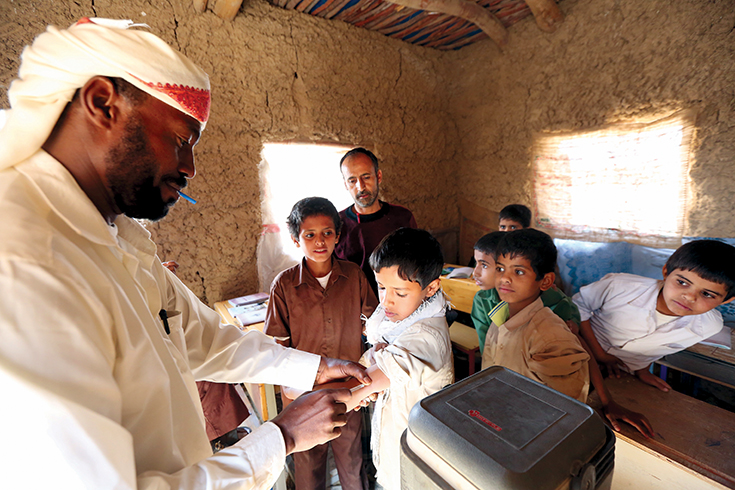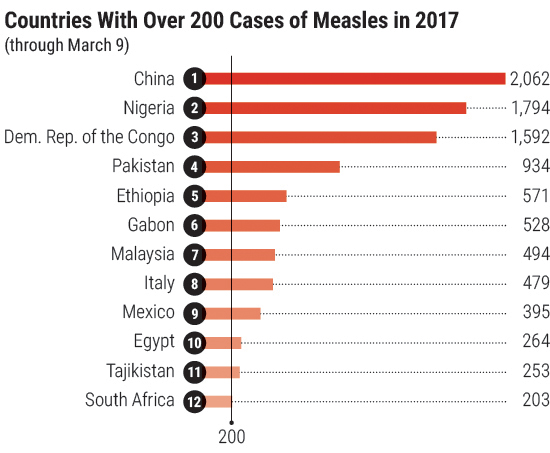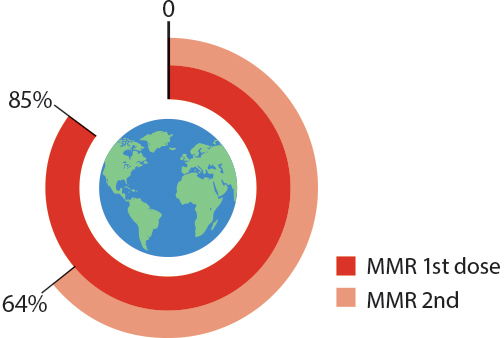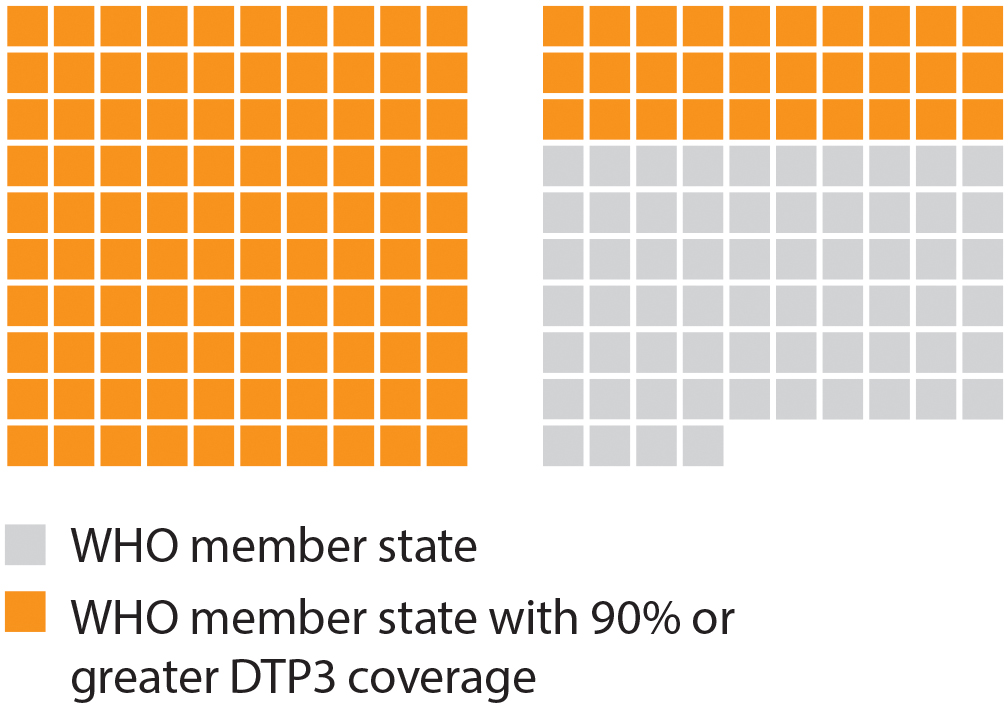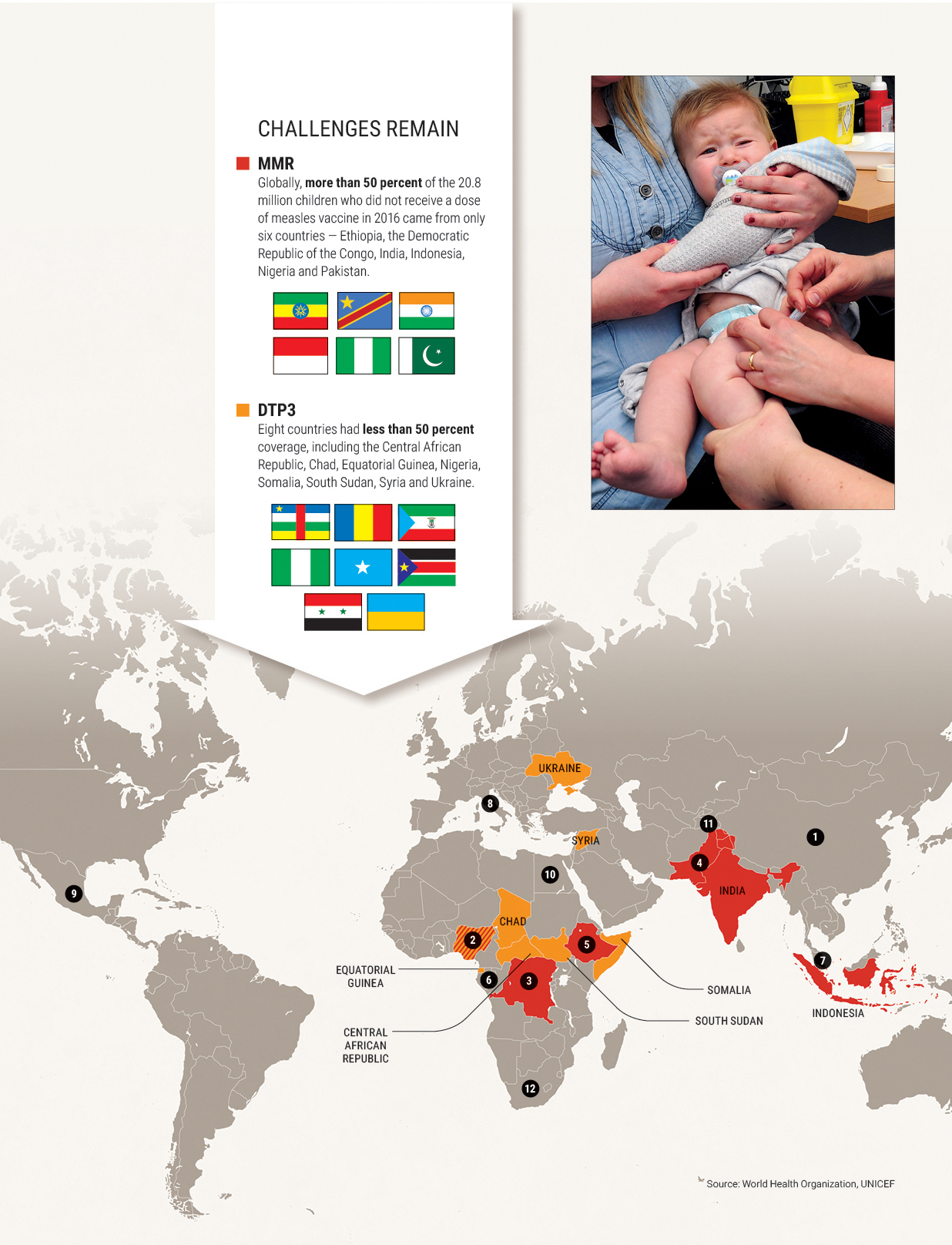New estimates from the World Health Organization (WHO) and UNICEF have found that 12.9 million infants, or nearly 1 in 10 around the world, didn’t receive any vaccinations in 2016. Consequently, these infants missed the first dose of the combined vaccine against diphtheria-tetanus-pertussis (DTP3) and the vaccine to prevent measles, mumps and rubella (MMR).
Preventable Diseases
- Measles, mumps and rubella are all viral infections. Measles can cause a rash, cough, runny nose, eye irritation and fever. It can lead to ear infection, pneumonia, seizures, brain damage and death. Of these diseases, measles is the one still common in many parts of the world.
- Diphtheria is a bacterial infection that can cause breathing difficulties and death.
- Tetanus germs grow in puncture wounds caused by dirty nails, tools, splinters and animal bites.
- Pertussis, also called whooping cough, is a disease of the respiratory tract caused by bacteria in the mouth, nose and throat.
Strides Toward Full Coverage
MMR
About 85 percent of children have been vaccinated with the first dose of measles vaccine by their first birthday through routine health services, and 64 percent with a second dose. WHO says these coverage levels remain short of those required to prevent outbreaks.
DTP3
New statistics show that 130 of the 194 World Health Organization member states reached the WHO goal of at least 90 percent coverage for DTP3.

